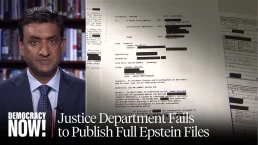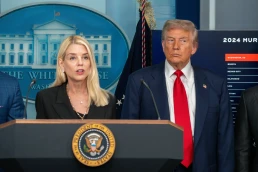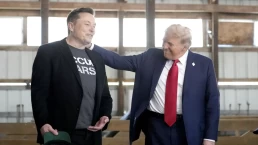The ultimate environmental disasters are still siloed.
By Norman Solomon, Tom Dispatch
Thirty-five years after the start of the nuclear age with the first explosion of an atomic bomb, I visited the expanse of desert known as the Nevada Test Site, an hour’s drive northwest of Las Vegas. A pair of officials from the Department of Energy took me on a tour. They explained that nuclear tests were absolutely necessary. “Nuclear weapons are like automobiles,” one told me. “Ford doesn’t put a new automobile out on the highway until they’ve gone through a lengthy test process, driving hundreds of thousands of miles.”
By then, in 1980, several hundred underground nuclear blasts had already occurred in Nevada, after the 1963 Limited Test Ban Treaty required that atomic testing take place below the earth’s surface. Previously, about 100 nuclear warheads had been set off above ground at that test site, sending mushroom clouds aloft and endangering with radiation exposure not just nearby soldiers but downwind civilians as well.
My guides from the Energy Department were upbeat. The only sober words came after one old hand at nuclear testing asked me to turn off my tape recorder. “No head of state in the world has ever seen a nuclear bomb explosion,” he said. “To me, that’s scary. I don’t think anyone who has ever seen a nuclear explosion has ever not asked the question: ‘My God, what have we done?’”

Otherwise, the on-the-record statements I got that day amounted to happy talk about the nuclear arms race. When officials showed me a quarter-mile-wide crater caused by a hydrogen bomb named Sedan, they expressed nothing but pride. “Across the windy desert floor of the Nevada Test Site, the government guides talk enthusiastically about their dominion,” I wrote then for The Nation magazine. “As the wind whips through Yucca Flats, it whispers that, left to their own ‘devices,’ the nuclear-weapons testers will destroy us all. To allow their rationales to dissuade us from opposition is to give them permission to incinerate the world.”
At the time, it never occurred to me that gradual heating, due mostly to carbon emissions sent into the atmosphere, could devastate the world, too. My visit to the Nevada site took place a year before Al Gore, then a member of the House of Representatives, convened the first-ever congressional hearing on global warming in 1981. Bill McKibben’s pathbreaking book on the subject, The End of Nature, appeared in 1989. Since then, the escalating catastrophe of human-caused climate change has become all too clear to those paying attention.
Recent Posts
The “President Of Peace” Prepares For War
December 23, 2025
Take Action Now The Donroe Doctrine Hits HomeBy William D. Hartung, Tom Dispatch Earlier this month, the Trump administration released its new…
“Who Are They Protecting?”: Rep. Ro Khanna Urges Contempt Charges Over AG Bondi’s Epstein Redactions
December 22, 2025
Take Action Now “The House can act unilaterally on contempt, and this will be introduced by Thomas Massie. What the resolution will say is that…
Dems Demand Answers as Trump Photo Disappears From DOJ Online Epstein Files
December 21, 2025
Take Action Now “What else is being covered up?”By Brett Wilkins, Common Dreams Congressional Democrats on Saturday pressed US Attorney General…
Elon Musk Is Vowing Utopia Driven by AI and Robotics. Bernie Sanders Has a Few Questions
December 20, 2025
Take Action Now “I look forward to hearing about how you and your other oligarch friends are going to provide working people with a magnificent life…




